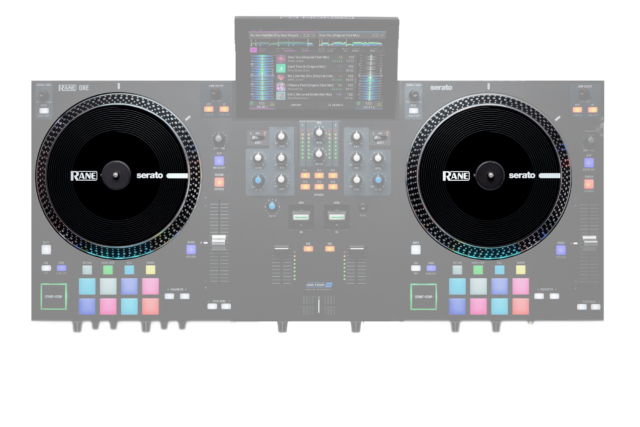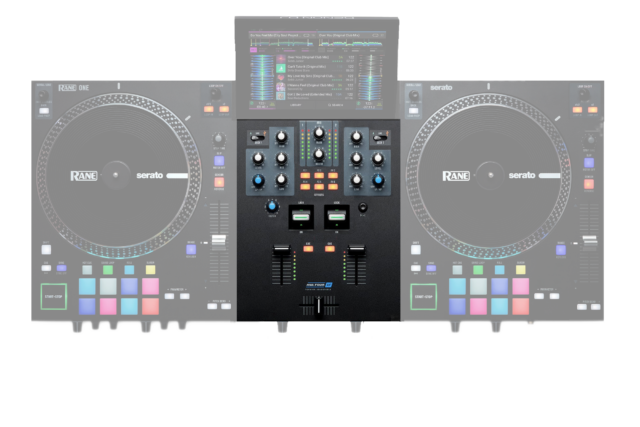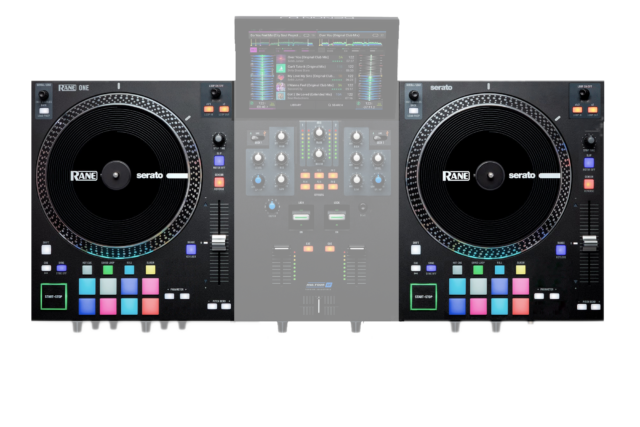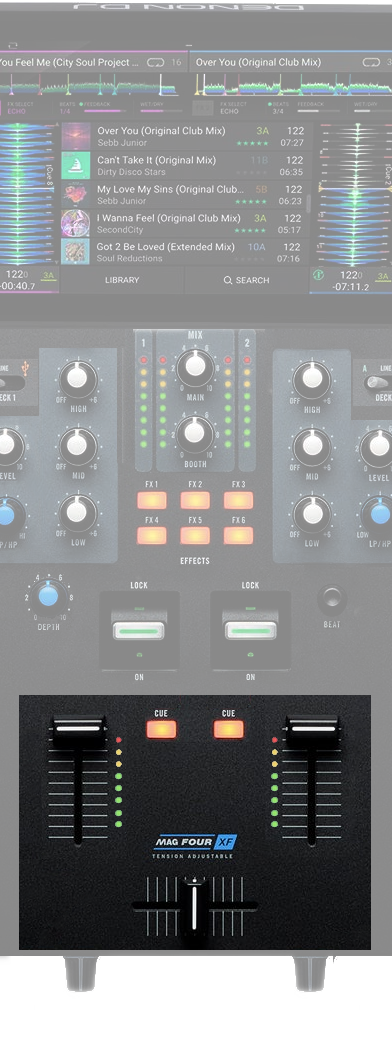Welcome back to the series where we imagine the very-near-future of DJ gear. The DJ gear market has been looking up for turntablists with the recent unveiling of dedicated battle-style controllers by Pioneer DJ and Rane – namely the DDJ-REV-7 and Rane One. These controllers combine large motorized jog wheels with battle-style mixers and high-end crossfaders – a match made in heaven for scratch DJs. Denon DJ, Rane’s sister company, has also released the SC6000-M motorized player. This concept aims to imagine a fusion between Rane’s and Denon’s technologies in the form of an all-in-one standalone for battle DJs.

Our hypothetical Rane Prime (above) concept combines Rane hardware with Denon’s Engine standalone OS. The Rane Prime has 7-inch motorized platters, a 7-inch touch screen, high-quality Mag-Four faders, FX paddles, and full-size performance pads.
Let’s dive in.
7’’ Motorized Control Platters

The most distinctive feature of the Rane Prime is its 7-inch motorized platters, which feel almost identical to turntables. The platters consist of vinyl discs sitting atop slipmats, much like a turntable. The discs connect to the central spindle, which derives control data from the platter without the need for DVS or tonearms. InMusic’s motorized platter technology is present in the SC6000M player and the Rane Twelve and One controllers.
Battle-Style Mixer

The Rane Prime features a standard two-channel “battle” mixer setup. The line faders and crossfader are all Mag Fours (Rane’s high-performance magnetic fader). The faders and knobs are amply spaced for easy manipulation. The knobs have been “split stacked” with the filter, gain, and channel select knobs set aside from the EQ knobs. The mixer also includes FX paddle controls- two-way switches which can be locked or temporarily switched to activate FX.
Deck Controls

The Rane Prime has a standard set of eight performance pads per deck, with hot-cue, saved loop, beat roll, and beat slicer modes. The tempo faders sit at the front right of each deck in traditional CDJ fashion. The concept features click encoders for setting and adjusting loop lengths.
Hardware Build
The Rane Prime concept follows the traditional tank-like Rane build. The Rane Prime follows suit in this field: the line faders and crossfader are high quality Mag Fours, the faceplate is made of solid aluminum, the knobs have bolted metal pot shafts, and the buttons are made of thick backlit rubber. Rane products are renowned for their durability and build quality, and this concept would likely be no exception.

Denon OS
Denon DJ’s PRIME range of devices include ENGINE OS, a standalone DJ operating system. The Prime series has been massively successful due to their large tablet-like displays and abundant compatibility options. The Rane Prime features a 7-inch display that allows for swiping, pinch-zooming, and scrolling through libraries with ease. In traditional Denon fashion, though, the touch function serves as more of an extra convenience than a vital part of the unit’s controls. Thus, it is completely possible to play an entire set without touching the screen once.
Connectivity
The Rane Prime concept features a standalone-capable mixer section. Each channel can take a line-level input or USB soundcard input instead of the internal deck. The Rane Prime also has mic and aux inputs with controls under the front panel. The Prime has main, booth, and headphone outputs.
Our final take: The Rane Prime could be the best of both worlds
The Rane Prime concept follows the recent trend of turntablist gear releases, imagining a standalone all-in-one scratch DJ device. This has become especially plausible now that InMusic has shown cooperation between its daughter companies – namely with a recent Numark product running Engine OS. Devices like these could be a godsend to open-format DJs of all kinds, who would finally have a suitable all-in-one for scratching. The market is ripe for turntablist and standalone products alike, and there’s no telling how well a combination of the two could sell.





